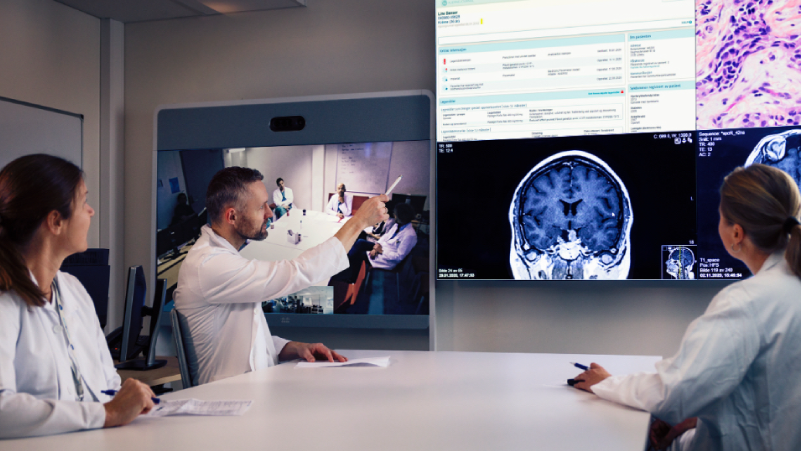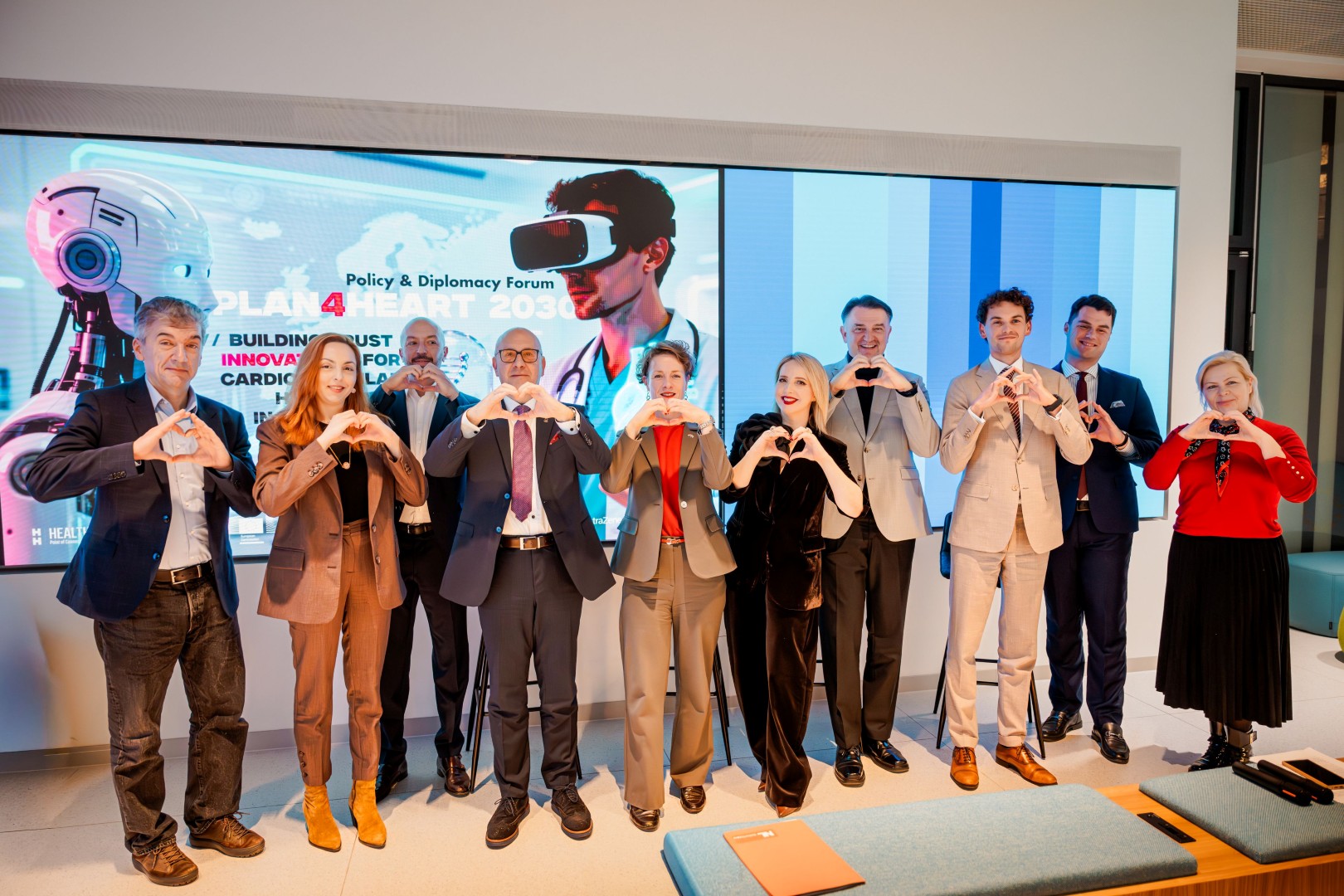Beacon of the Cancer Care – Cancer in 2040: Estimates for an ageing Europe (European Cancer Inequalities Registry)
cccording to European Cancer Inequalities Registry, only accounting for demographic effects, the European cancer burden is expected to increase by about 38 % in terms of new cancer cases and 44 % of cancer deaths by 2040. ECIR – European Cancer Inequalities Registry is a flagship initiative of Europe’s Beating Cancer Plan. It provides sound and reliable data on cancer prevention and care to identify trends, disparities and inequalities between Member States and regions.
SOURCE & COPYRIGHTS //
https://cancer-inequalities.jrc.ec.europa.eu/sites/default/files/ECIR-inequalities-factsheet-2040-cancer-estimates-May-2023.pdf
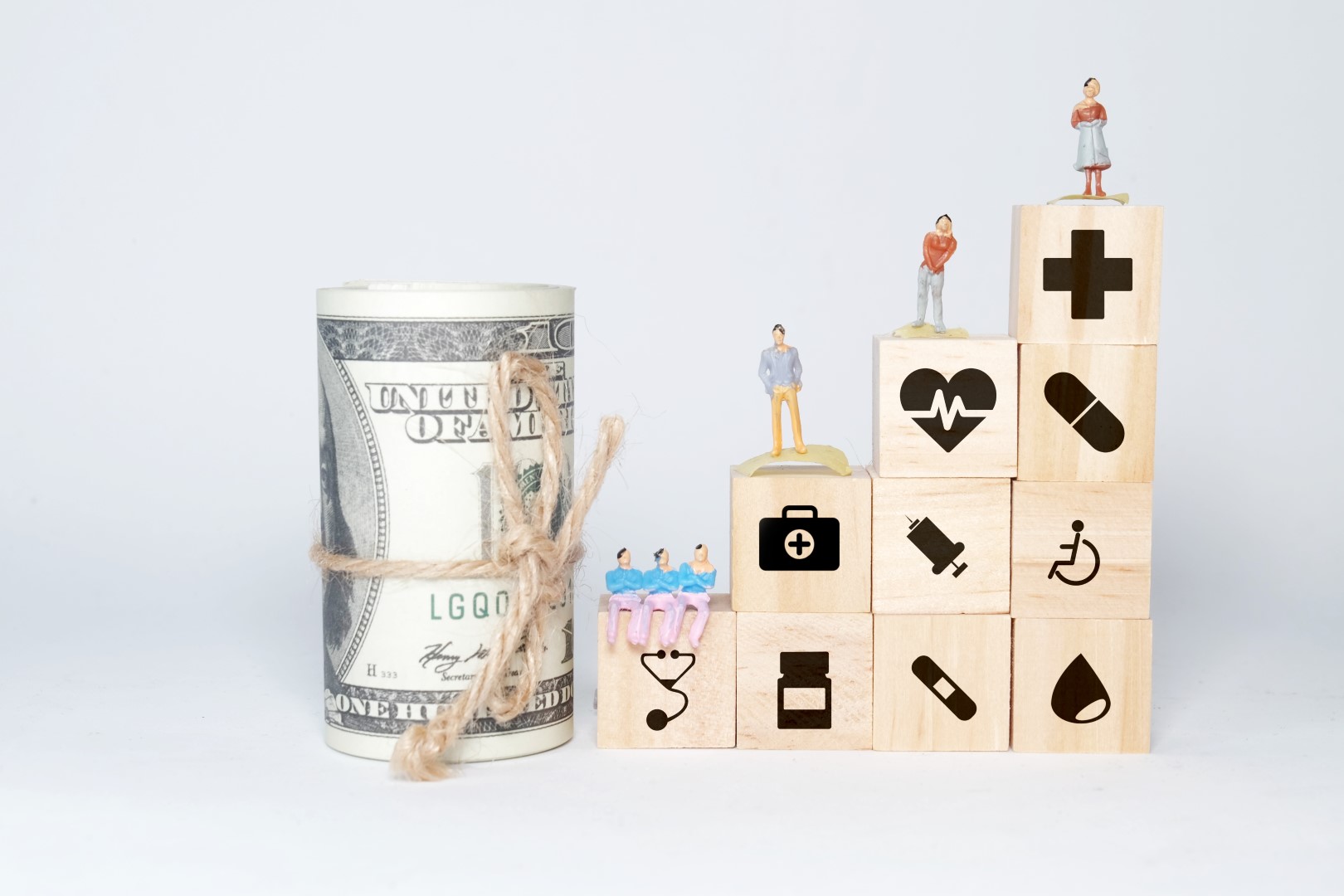
Cancer-burden will increase even more in an ageing Europe.
- Cancer incidence is higher in men than in women. If only demographic projections are considered, this gap is estimated to increase by 2040.
- The estimated increases in cancer incidence are not the same for all cancer types and differ between European countries.
- We need effective prevention, early detection and cancer care policies, to counter these concerning trends and inequalities.
CHALLENGES
Cancer burden and its cost Cancer is the number one cause of death in the EU for citizens under 65 and the second cause of death for all EU citizens 1. It exerts a tremendous emotional and economic burden, and the estimated societal cost in 2018 was €199 billion 2. The European Cancer Information System (ECIS) estimates 2.7 million new cancer cases and 1.3 million cancer deaths in 2020 3 (Figure 1).
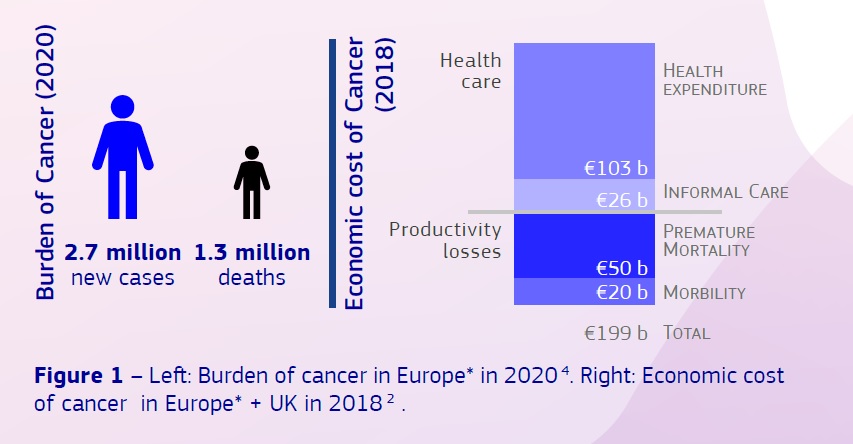
INEQUALITIES
Age as a risk factor Unlike tobacco use, alcohol consumption, unhealthy diet, physical inactivity, air pollution and other environmental and occupational carcinogens, ageing is one of the nonmodifiable risk factors for cancer. In 2020, about 94.7 million (21 %) Europeans* were over 65. Despite representing only a fifth of the population, this age group is estimated to suffer more than 62 % (1.7 million) of the newly diagnosed cancer cases and 76 % (0.98 million) of the total deaths by cancer (Figure 2)
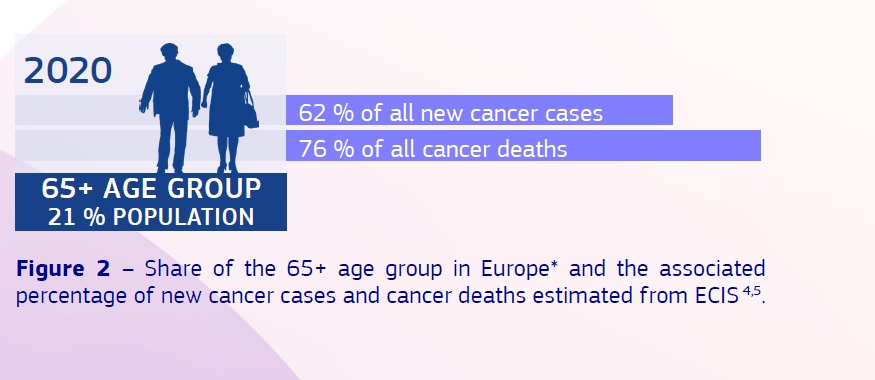
The European population is shrinking and ageing 6. By 2040, the 65+ age group is estimated to increase by 34 %. Given that cancer risk is higher in this age group, the European cancer burden is expected to increase by about 38 % in terms of new cancer cases and 44 % of cancer deaths 4 (Figure 3).
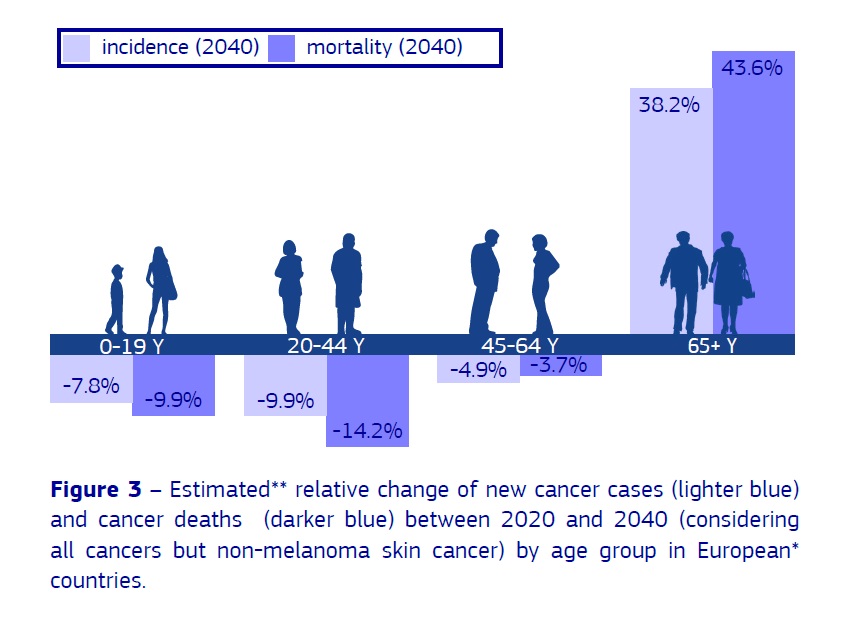
Similarly to 2020, the estimates** point to colorectal, prostate, lung and breast cancers as those responsible for the majority of new cases in 2040, while those responsible for the majority of deaths will be lung, colorectal, prostate and pancreatic cancers (Figure 4).
Inequalities by sex Cancer incidence estimates are higher for men than for women and this difference is estimated** to increase by 2040 (Figure 5). The same applies for the mortality estimates.
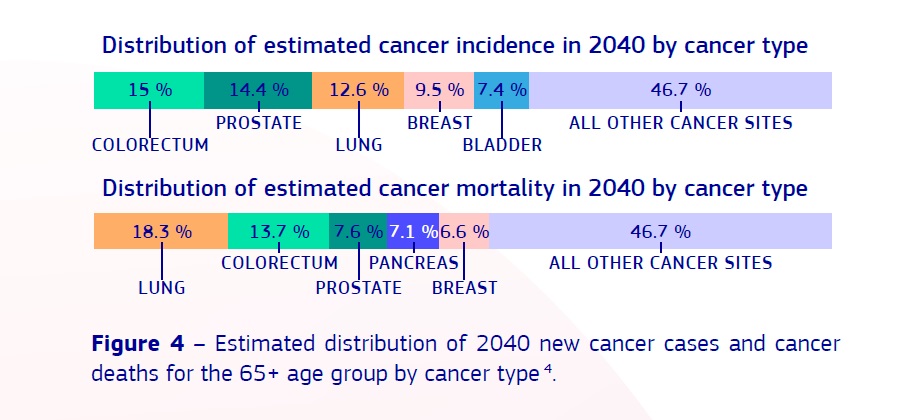
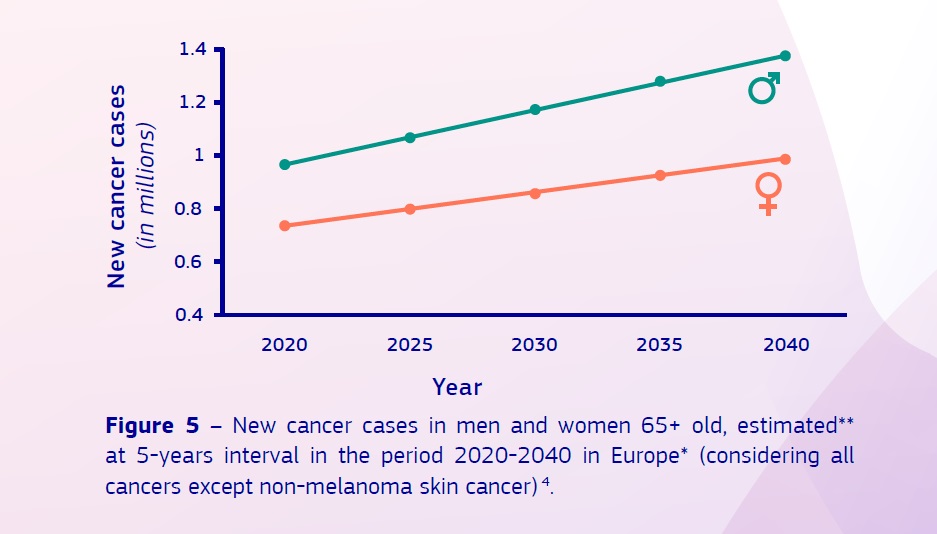
Men and women are differently affected by different cancer types (Figure 6). In women, breast cancer is estimated** to be responsible for the highest number of new cases in 2040, as well as cancer deaths. In men, prostate cancer is estimated to become the most commonly diagnosed cancer in 2040 while lung cancer is expected to be the deadliest cancer.
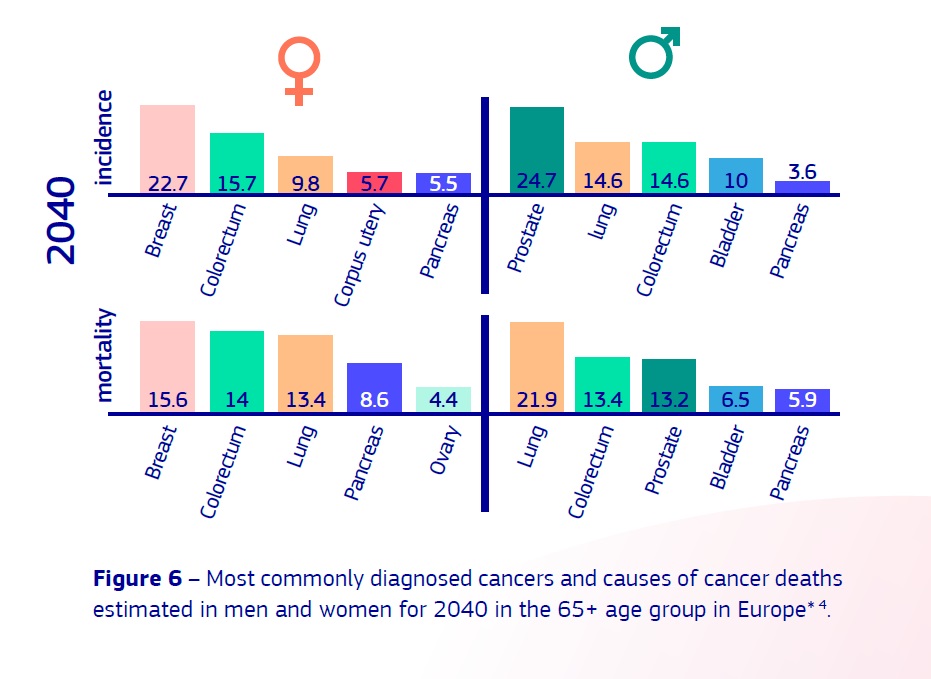
Geographical inequalities Germany, France, Italy and Spain have the biggest share of new cancer cases in Europe* given they are the most populated countries (Figure 7). However, the highest relative increase in new cancer diagnoses from 2020 to 2040 among the 65+ age group is estimated** to occur in Ireland (87%), Luxembourg (83%), Malta (68%) and Spain (60%) (Figure 7). This is because these countries are expected to have the largest ageing population.
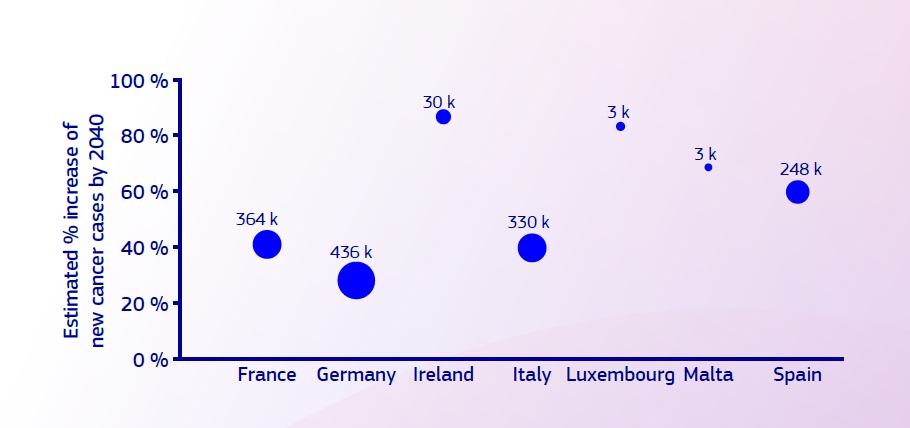
CLOSING THE GAP
Demographics alone are estimated to account for a substantial increase in the number of new cancer cases and related deaths in 2040. The 65+ age group will be disproportionally affected by cancer. The increase will be more pronounced in men compared to women, and will affect some national health systems, such as those of Ireland, Luxembourg, Malta and Spain more than others. On average around 40% of cancers could be prevented 7. The European Code against Cancer recommends 12 actions that we can do at the individual level to reduce our risk of getting cancer 8. However, additional EU or national and regional-level efforts are needed to counter these estimates. Effective prevention and early detection can reduce the burden of cancer on individuals and on healthcare settings. Policies such as tackling environmental and occupational exposures to known carcinogens, transport and city infrastructure to boost physical activity and reduce environmental pollution, policies enabling access to healthy diets and limiting access to alcohol and tobacco or work policies enabling breastfeeding (a protective factor for breast cancer) can make a real difference. Undoubtedly, improved participation in population cancer screening programmes, early cancer detection, as well as quality assured health care will also play a key role.
FULL SOURCE PDF //
https://cancer-inequalities.jrc.ec.europa.eu/sites/default/files/ECIR-inequalities-factsheet-2040-cancer-estimates-May-2023.pdf
REFERENCES
[1] EUROSTAT: Causes of death statistics
[2] Hofmarcher, T. et al., ‘The cost of cancer in Europe 2018’, European Journal of Cancer 129 (2020) 41-49.
[3] Dyba T, et al.. The European cancer burden in 2020: Incidence and mortality estimates for 40 countries and 25 major cancers. Eur J Cancer. 2021 Nov;157:308-347.
[4] European Cancer Information System
[5] EUROSTAT: Key figures on Europe, 2022 edition
[6] The 2021 Ageing Report: Economic and Budgetary Projections for the EU Member States (2019-2070)
[7] Estimated proportion of potentially preventable cancers
[8] European Code against Cancer
![]()
Partners of “Beacon of the Cancer Care”



